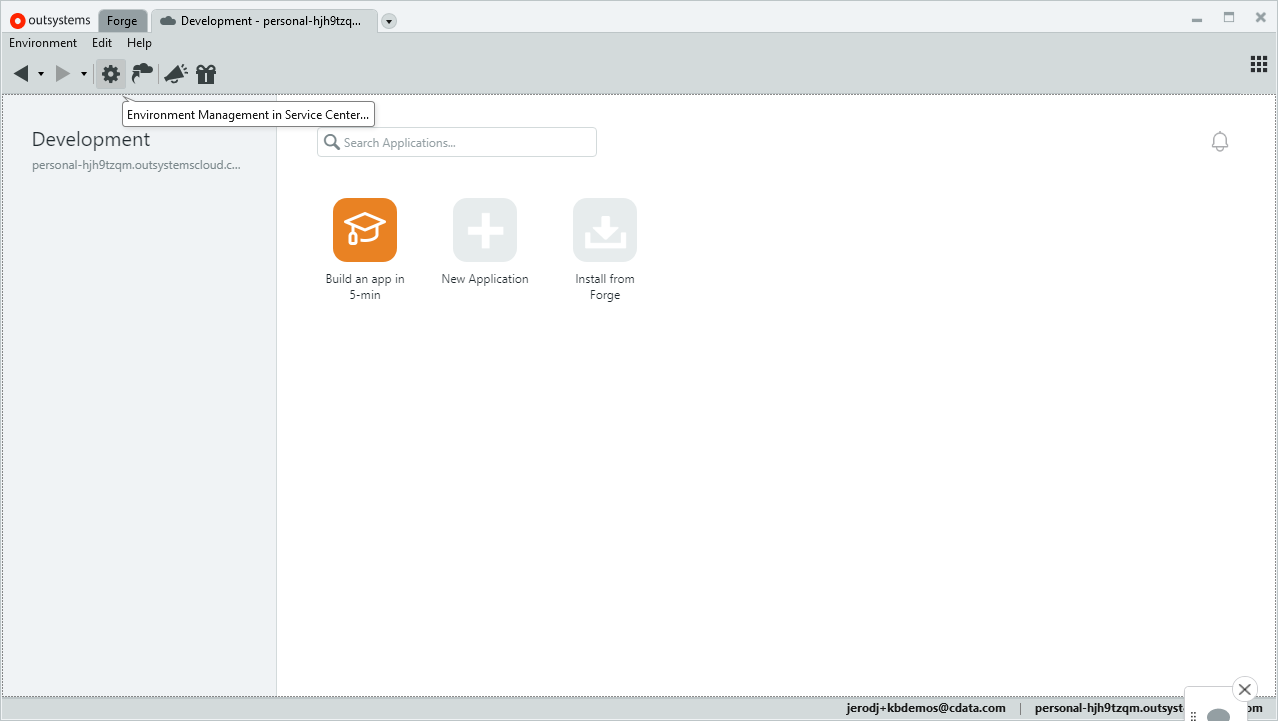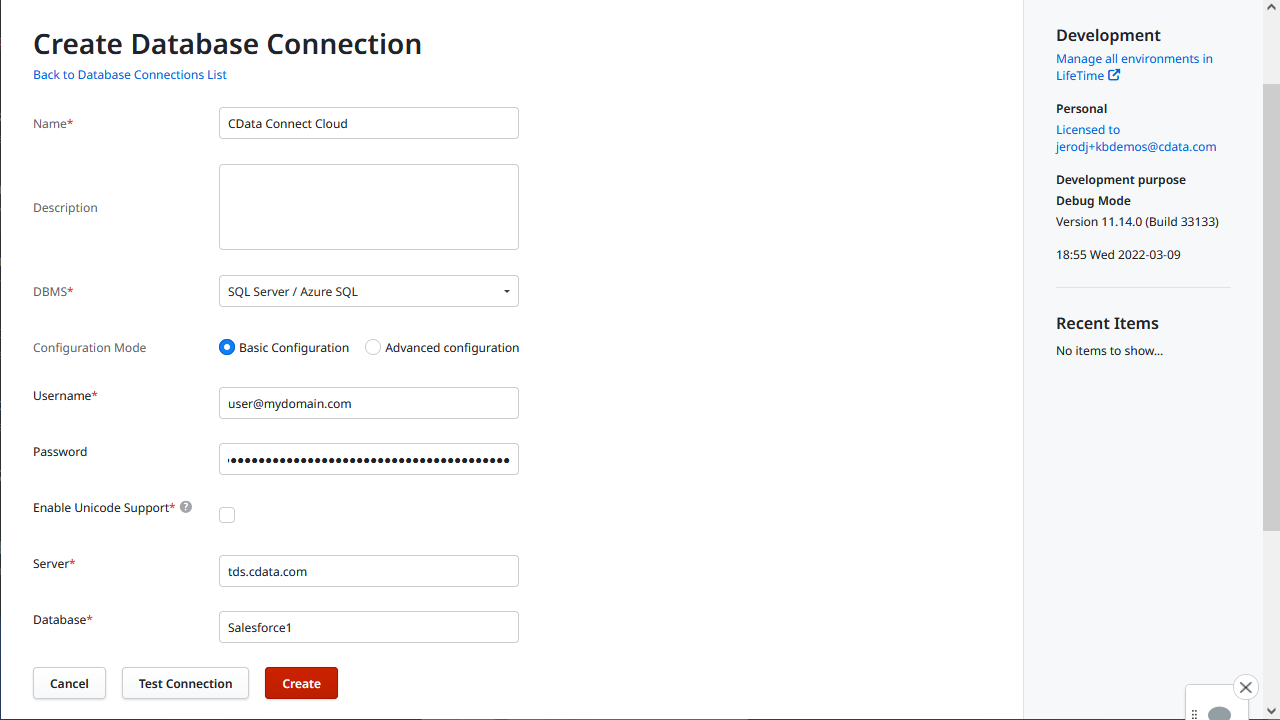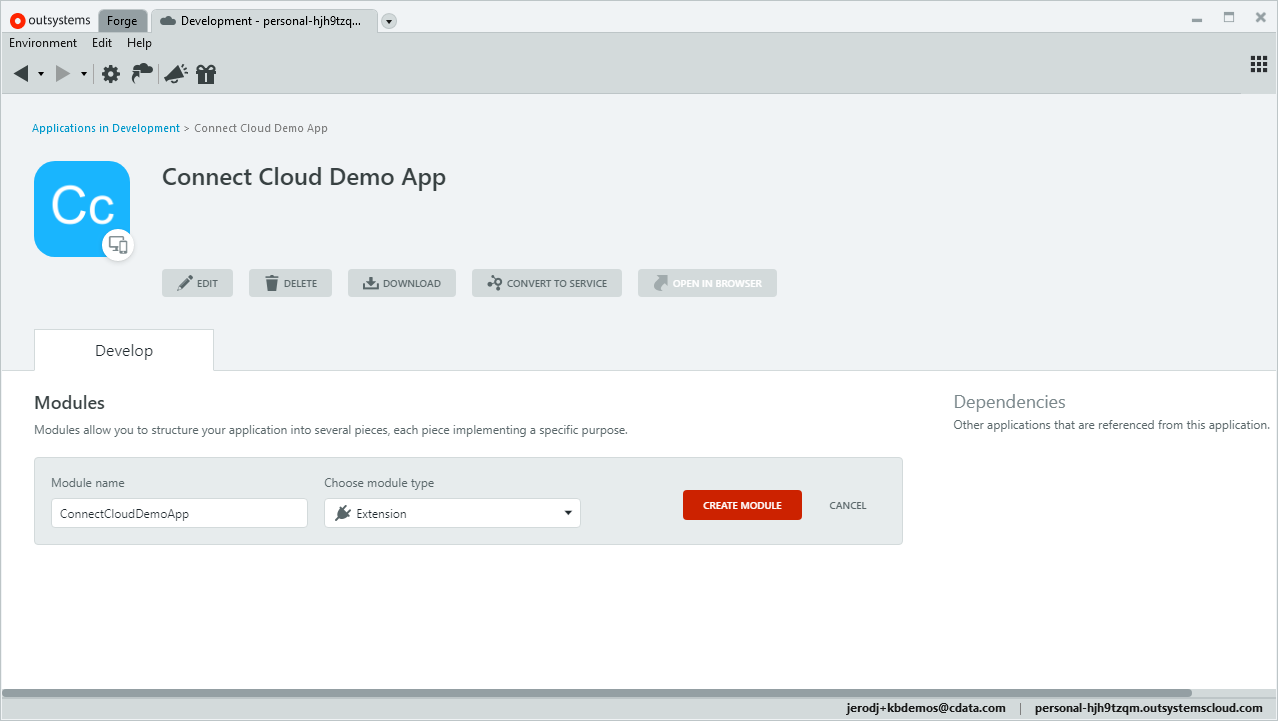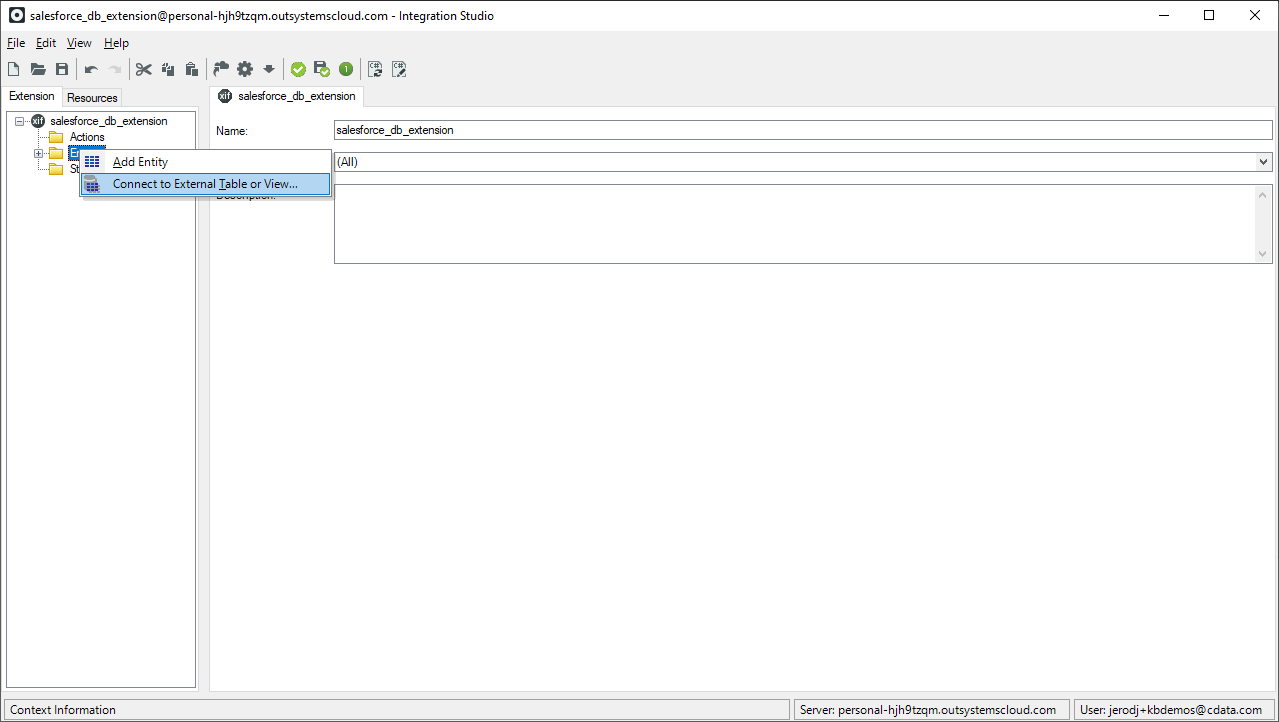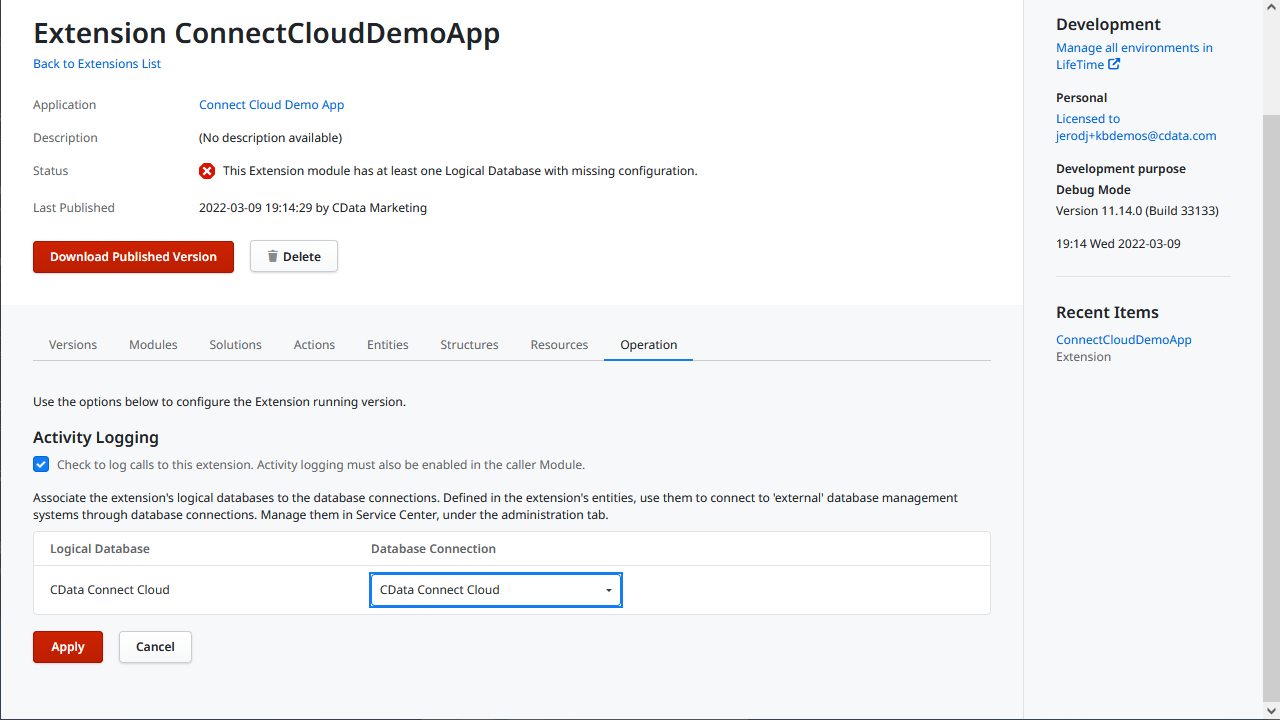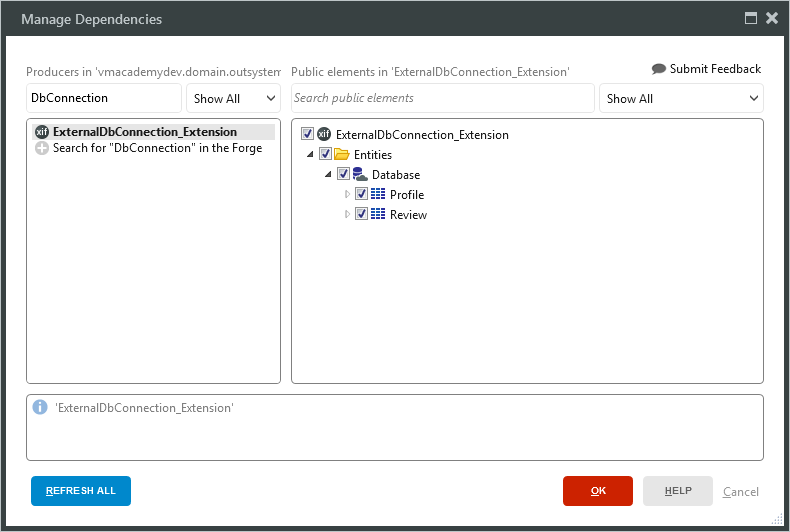Discover how a bimodal integration strategy can address the major data management challenges facing your organization today.
Get the Report →Create Paylocity-Connected Enterprise Applications in OutSystems
Use CData Connect Cloud to connect to Paylocity Data from OutSystems and build custom enterprise apps using live Paylocity data.
OutSystems is a low-code platform which provides the tools for companies to developer, deploy, and manage omnichannel enterprise applications. When paired with CData Connect Cloud, you get instant, cloud-to-cloud access to Paylocity data for business applications. This article shows how to create a virtual database for Paylocity in Connect Cloud and build a simple app from Paylocity data in OutSystems.
The CData Connect Cloud provides a pure cloud-to-cloud interface for Paylocity, allowing you to build reports from live Paylocity data in OutSystems — without replicating the data to a natively supported database. As you create applications to work with data, OutSystems generates SQL queries to gather data. Using optimized data processing out of the box, CData Connect Cloud pushes all supported SQL operations (filters, JOINs, etc.) directly to Paylocity, leveraging server-side processing to quickly return the requested Paylocity data.
Configure Paylocity Connectivity for OutSystems
Connectivity to Paylocity from OutSystems is made possible through CData Connect Cloud. To work with Paylocity data from OutSystems, we start by creating and configuring a Paylocity connection.
- Log into Connect Cloud, click Connections and click Add Connection
![Adding a Connection]()
- Select "Paylocity" from the Add Connection panel
![Selecting a data source]()
-
Enter the necessary authentication properties to connect to Paylocity.
Set the following to establish a connection to Paylocity:
- RSAPublicKey: Set this to the RSA Key associated with your Paylocity, if the RSA Encryption is enabled in the Paylocity account.
This property is required for executing Insert and Update statements, and it is not required if the feature is disabled.
- UseSandbox: Set to true if you are using sandbox account.
- CustomFieldsCategory: Set this to the Customfields category. This is required when IncludeCustomFields is set to true. The default value for this property is PayrollAndHR.
- Key: The AES symmetric key(base 64 encoded) encrypted with the Paylocity Public Key. It is the key used to encrypt the content.
Paylocity will decrypt the AES key using RSA decryption.
It is an optional property if the IV value not provided, The driver will generate a key internally. - IV: The AES IV (base 64 encoded) used when encrypting the content. It is an optional property if the Key value not provided, The driver will generate an IV internally.
Connect Using OAuth Authentication
You must use OAuth to authenticate with Paylocity. OAuth requires the authenticating user to interact with Paylocity using the browser. For more information, refer to the OAuth section in the Help documentation.
The Pay Entry API
The Pay Entry API is completely separate from the rest of the Paylocity API. It uses a separate Client ID and Secret, and must be explicitly requested from Paylocity for access to be granted for an account. The Pay Entry API allows you to automatically submit payroll information for individual employees, and little else. Due to the extremely limited nature of what is offered by the Pay Entry API, we have elected not to give it a separate schema, but it may be enabled via the UsePayEntryAPI connection property.
Please be aware that when setting UsePayEntryAPI to true, you may only use the CreatePayEntryImportBatch & MergePayEntryImportBatchgtable stored procedures, the InputTimeEntry table, and the OAuth stored procedures. Attempts to use other features of the product will result in an error. You must also store your OAuthAccessToken separately, which often means setting a different OAuthSettingsLocation when using this connection property.
![Configuring a connection (Salesforce is shown)]()
- RSAPublicKey: Set this to the RSA Key associated with your Paylocity, if the RSA Encryption is enabled in the Paylocity account.
- Click Create & Test
- Navigate to the Permissions tab in the Add Paylocity Connection page and update the User-based permissions.
![Updating permissions]()
Add a Personal Access Token
If you are connecting from a service, application, platform, or framework that does not support OAuth authentication, you can create a Personal Access Token (PAT) to use for authentication. Best practices would dictate that you create a separate PAT for each service, to maintain granularity of access.
- Click on your username at the top right of the Connect Cloud app and click User Profile.
- On the User Profile page, scroll down to the Personal Access Tokens section and click Create PAT.
- Give your PAT a name and click Create.
![Creating a new PAT]()
- The personal access token is only visible at creation, so be sure to copy it and store it securely for future use.
With the connection configured, you are ready to connect to Paylocity data from OutSystems.
Connect to Paylocity from OutSystems
The steps below outline connecting to CData Connect Cloud from OutSystems to create a new Paylocity database connection.
- Open OutSystems Service Studio
- Click the gear icon to open Environment Management in the Service Center
![Opening the Service Center]()
- Click Administration and select "Database Connections"
- Click "New Database Connection"
- Configure the database connection:
- Name: name the connection (e.g. CData Connect Cloud Paylocity)
- DBMS: SQL Server / Azure SQL
- Username: a Connect Cloud user (e.g. [email protected])
- Password: the PAT for the Connect Cloud user
- Server: tds.cdata.com,14333
- Schema: the name of your Paylocity connection (e.g. Paylocity1)
![Connecting to the Connect Cloud]()
- Click "Test Connection"
- Click "Create"
Map Paylocity Tables or Views to Entities in an Extension Module
Once you create the database connection for Paylocity, you can create an extension that maps the tables or views to OutSystems entities. If you have not already done so, create an Application in Service Studio.
- Open the Service Studio and open the existing Application
- Click "Add Module," set the "Module Name" (e.g. paylocity_db_extension), set "Module Type" to "Extension," and click "Create Module"
![Creating a new extension module]()
- In Integration Studio, connect to your environment
- Right-click "Entities" in the extension tree and select "Connect to External Table or View..."
![Connecting to external tables or views]()
- Follow the steps in the wizard, selecting the tables and views you wish to work with
- In the Integration Studio, click "1-Click Publish"
- In the "1-Click Publish" wizard, click "Configure" when the process completes
- In the Service Center, associate the logical database name of the extension to the database connection that the extension will use and click "Apply"
![Configuring the external extension]()
- In the Service Center, associate the logical database name of the extension to the database connection that the extension will use and click "Apply"
- In your application, click "Manage Dependencies..."
- Add a dependency to the Extension and select the Entities that you will use in your application
![Adding a dependency to the extension]()
At this point, you can access and work with Paylocity data just like you would with the standard OutSystems entities.
More Information & Free Trial
With Connect Cloud and OutSystems, you can easily build Paylocity-connected applications. Request a free trial of Connect Cloud and start working with Paylocity data in OutSystems today.











